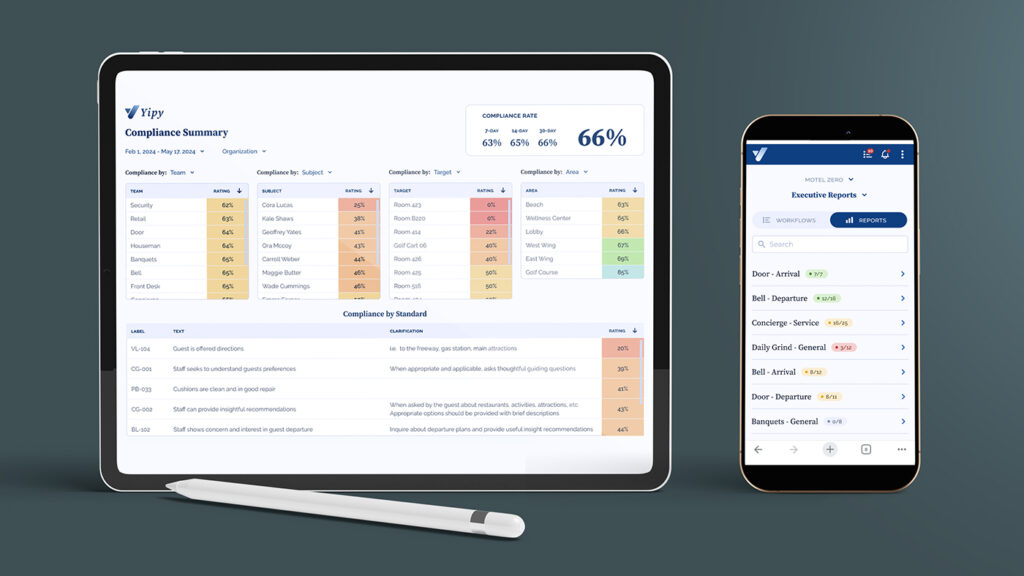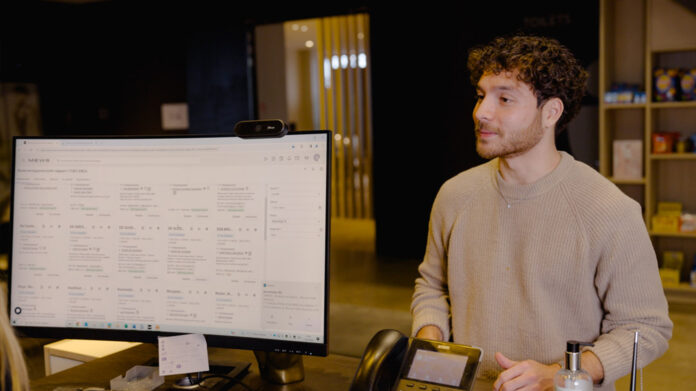Today’s hotel teams are often stretched thin, juggling multiple responsibilities. Advancements in automation technology present a compelling opportunity to streamline operations and free staff from performing certain time-consuming, rote tasks. It’s a promising solution to an ongoing problem, but the reality of implementing automation in hotel operations isn’t quite so simple. Back of House spoke with three leaders in this space about what it takes to set hotel teams up for success when
working with automation technology.
Getting started: Where does automation make sense in hotel operations?
Ashley Dora is the Americas vice president of operations for Valor Hospitality, a global full-service hotel underwriting, acquisition, development, management, and asset management company. Dora noted that trying to implement a one-size-fits-all solution across a diverse portfolio of hotels is a challenge, especially considering that each property has a team with different skillsets and resources. That’s why it’s important to home in on the details, analyzing which properties, departments, and processes stand to benefit the most from automation. When a team is struggling with a routine process that takes a long time or is time-sensitive, Dora will ask questions like, “What are the obstacles? Why is it so hard for the team to complete the task?” The answers to these questions can help identify opportunities for automation.
In general, Dora said she sees the biggest opportunity for automation to improve operations in food and beverage departments, especially in busy restaurants with high staff turnover. “Having systems in place that are user friendly and intuitive takes that onboarding process down considerably.” For instance, her team brought in automation technology to streamline food and beverage inventory—a rigorous and time-sensitive process that requires multiple people.
The ROI of automation technology is property dependent as well, Dora added. Consider how much time a team spends communicating back and forth to resolve an issue, or the downtime spent waiting for answers to be able to move on to the next step in a process. All these time savings translate to cost savings.
What’s more, by automating processes, hoteliers can collect valuable data that can be analyzed to uncover insights into operational performance and areas for improvement.

Setting hotel teams up for success with automation
Before realizing all of automation’s advantages, hotel teams need to be able to properly implement this technology in their operations. Here are five pieces of advice for hospitality leaders to set up their teams for success—and improve
ROI on automation technology:
Define your goal. Richard Valtr is the founder of hospitality management system Mews. The platform’s goal, Valtr explained, is to make technology more human and user-friendly so that users spend less time interacting with the solution and more time providing exceptional service to their guests. His advice for hoteliers looking to build their tech stack to automate more of their operations: Start with clear objects, and choose modern technology that easily integrates with other providers. “Define exactly what you want to achieve with automation—is it to improve the guest experience, operational efficiency, or reducing costs? From here, you’ll be
able to build the tech stack most suited to your needs,” he said.
Put in the work upfront (so staff don’t have to). Adam Tuttle is the co-founder of Yipy, a standards management software for hotels. He’s worked in hotels all over the country and is familiar with the challenge of adopting new tech on property. For Tuttle, the biggest compliment for a platform like Yipy is that it’s “dead simple” to use. Of course, behind every intuitive and simple user interface is significant time and effort. “We really work hard with leaders to set everything up for them,” Tuttle said. For instance, leaders looking to digitize their standards management may have a steep hill to climb at first; compiling all standards from brands, travel partners, and health departments alike, in all their various digital and analog formats, can seem like a mountainous challenge. In times like these, Tuttle advised, “Anything is better than nothing,” even if that means simply scanning a paper document and dropping a digital file into a shared drive. “And then, we eat the whale bite by bite,” he added, translating those various standards into the platform. The end result of these initial efforts means less work for staff in the long run.
Beta test new technology. When rolling out new technology, Dora said, first and foremost, pick a beta property. Choose a team whose skillset and resources ensures they have the capacity and capability to implement the new system (i.e., not a team that is already struggling with staffing shortages). For example, automating an F&B inventory process may only be possible at properties that have a director of food and beverage who can monitor that type of technology. “We have a couple of properties that are gracious enough to be some of our test properties,” Dora explained. The beta testing period presents an opportunity to “train the trainer” and support each other while working through the new technology, she noted. Once that trainer feels comfortable with the new system—not only implementing it at the beta property, but also supporting another onboarding— “that’s when we’ll move on to a second property,” Dora explained.
Anticipate a learning curve. Learning curves are inevitable when rolling out new technology. It’s also likely that new systems and processes will come up against some resistance among those expected to use them.
As Dora explained, sometimes it’s not clear to everyone on staff that working through initial challenges will lead to a big payoff in the long run: making everyone’s jobs easier. “There are so many efficiencies that maybe they can’t see on the front end,” she noted. “At the end of the day, they come around: There’s a huge learning curve, and then it’s, ‘How can we operate without this?’ There’s a mindset change in the process.”
Monitor progress, and repeat. The beta test may be over and the initial onboarding wrapped up, but ongoing system maintenance must continue. Valtr said that after implementation, “It’s crucial to regularly review the performance of your automated systems and be prepared to make adjustments to optimize performance.” And it doesn’t end there: “Keep iterating: In the age of AI, hospitality will become one of the biggest industries in the world, and technology can be used to make every hotel more profitable, every guest happier, and bring pride to every hotelier,” Valtr shared. “Stay on top of the latest trends and iterate on your tech stack to build the best solutions for your brand.”
| Reducing Workloads |
|---|
| Richard Valtr, founder of hospitality management system Mews, noted that while automation can streamline operations, human interaction remains the core of hospitality. “Technology should enhance, not replace, the human touch,” Valtr said. “Automation can handle repetitive tasks, freeing up staff to engage with guests in more meaningful ways.” Valtr referenced a recent analysis of Mews data by global research firm IDC, which found that staff using Mews’ technology saved nearly 5,000 hours collectively in administrative time over the summer, and front-desk staff achieved a 24 percent increase in efficiency by automating tasks like check-in and check-out. “For hotel groups, this can be the equivalent workload of around 12 full-time employees in the organization and gives front-desk staff more time to support guests, improving the overall customer experience.” |










